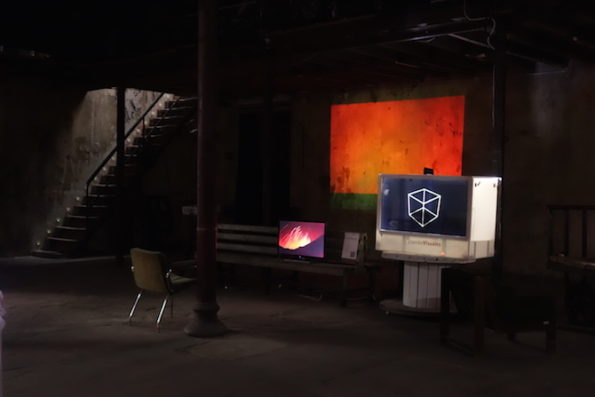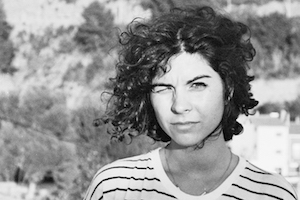Search
To search for an exact match, type the word or phrase you want in quotation marks.
A*DESK has been offering since 2002 contents about criticism and contemporary art. A*DESK has become consolidated thanks to all those who have believed in the project, all those who have followed us, debating, participating and collaborating. Many people have collaborated with A*DESK, and continue to do so. Their efforts, knowledge and belief in the project are what make it grow internationally. At A*DESK we have also generated work for over one hundred professionals in culture, from small collaborations with reviews and classes, to more prolonged and intense collaborations.
At A*DESK we believe in the need for free and universal access to culture and knowledge. We want to carry on being independent, remaining open to more ideas and opinions. If you believe in A*DESK, we need your backing to be able to continue. You can now participate in the project by supporting it. You can choose how much you want to contribute to the project.
You can decide how much you want to bring to the project.

Thought and world are language, Wittgenstein indicated in his first theories, because language represents the world and is a figure of thought. And if a virus is a parasite that destroys, that introduces disorder, codifying and decoding, as evidenced in various texts by Derrida, what happens when verbal and visual language go viral?
“We conceive our work as a parasite, that is to say, as the external feeding off the internal”. This is how the Yucatán artist, Carlos Hoyos, presents his video Sinfonías Adolescentes co-directed with Marytere Narváez, as a participant in the fourth edition of the International Video Art House Madrid,(IVAHM’15). “In this case, what we wanted to do is parasitize the memory of our city, the spatial memory of discourses and acts that take place in it, and not just to parasitize them, so much as infect them. What we infect is the relation between time, space, acts and discourses.”
In historiography movements and turns are identified and evidenced, outbursts triggered with the aim of agitating, that end up being absorbed by the system; the thwarted hope George Orwell warned of in his famous 1984, or what Charlie Brooker, the creator of the series Black Mirror, more recently portrayed in a masterly manner in the second chapter of the first season. History holds thousands of examples, such as the anti-capitalist protest of punk, which served as inspiration for large fashion firms. Such contradictions can be pointed out, but the power lies in their appropriation. Carlos Hoyos emphasises this potential through language and audio-visual techniques, remembering what many have already said in one way or another, “everything is political”, to which he adds “everything is poetic”, because anything thing can be subject to a subjective and transformative dimension. One way of breathing new life into established conventions, or hegemonic structures, is to introduce a parasite that modifies the content and as a consequence its form, contaminating in the positive sense of the word.
In an endeavour to approximate these realities, video artists produce pieces that escape discourse and what is “visually correct” through new narratives and new forms of visualizing. Francisco Prieto and Néstor Brives, directors of this video-graphic encounter, have identified them under the labels: human landscapes (body, society, environment and portrait), experimental video, video poems, dance video and animation. The co-directors wager on video art as a parasitic form, focussing in this edition on making other visions visible, voices generally silenced or relegated to local spaces, or what is the same, outwith the limits of mainstream culture. They consider video has a potential for subversion, even though it’s a complex task in a State where any noise only seems to resonate beyond it, and they continue to trace pathways and multiply connections both within and beyond the country. Each year they gather critiques and implicated extractions of customised reality; innumerable experiments materialised as textured hybrids; synesthetic sensations; virtual compendiums; ultra-superpositions; glitches and giffs, in a marked venture to offer overflowing content.
Video art is in itself a rupture with linearity, a space of creative and conceptual freedom armed with poetry. During this week of video-graphic celebration, ike a button with which to decode established codes, the political manifesto of the collective feminidades fluidas, was presented, that focussed on sexuality and (trans)feminine identities. The collective made up of Eva Luque, Adriana Luque and Rebeca Sas, curated within the festival an exhibition of video art as windows on new pro-aesthetic mutations, new sexual imaginaries or what they call “fluid femininities”. In one of his last investigations, Wittgenstein recognised the lack of depth of his first theory, assuming that language couldn’t be a logical measure of realities: its use is governed by rules and not by thought, or to put it another way, it forms part of a construction of social conventions. The work of Abertura Vaginal endeavours to appropriate established codes and in this way decode them, evidencing through the paradox of appropriation from radical feminism and post-identitarian positions the input for “woman” that is given to us, that its representation and identity is re-signified.
These interventions positively infect language and consequently how the order is seen, showing the contradictions and intervening in the discourse inherited over generations. It breaks the pact that runs through reality, or at least tries. But without any public, it’s like appropriating an empty nest, an inert body. Proposals like that of the invited collective Videoartistas Asociados, act as a force of support and interconnection amongst all those video artists or agents interested in elucidating technical, logistical and bureaucratic doubts, as well as lending itself as a platform for diffusion and enjoyment.
Such are things, the festival IVAHM’15 is presented as a celebration of a medium that is gaining prominence in artistic circuits, with a growing number of adepts, one just has to cast a quick glance at this month of May, where there are video-graphic events to choose from. What is more it has exemplified the perception indicated by Hito Steyerl in her book The Wretched of the Screen, where she explains that the linear perspective that has dominated our vision for a long time is fragmenting into multiple perspectives. This rupture has materialised in the art centre Neomudejéar with a plethora of screens distributed in an apparently chaotic manner; simultaneous reproductions, disassociated, diverging, transnational and parasitic discourses coexisting in the same host-nest that is reality.

Nerea Arrojería is an art historian specialized in photography. Among her lines of interest is the still or moving image used in contemporary societies, inside or outside the museum.
"A desk is a dangerous place from which to watch the world" (John Le Carré)